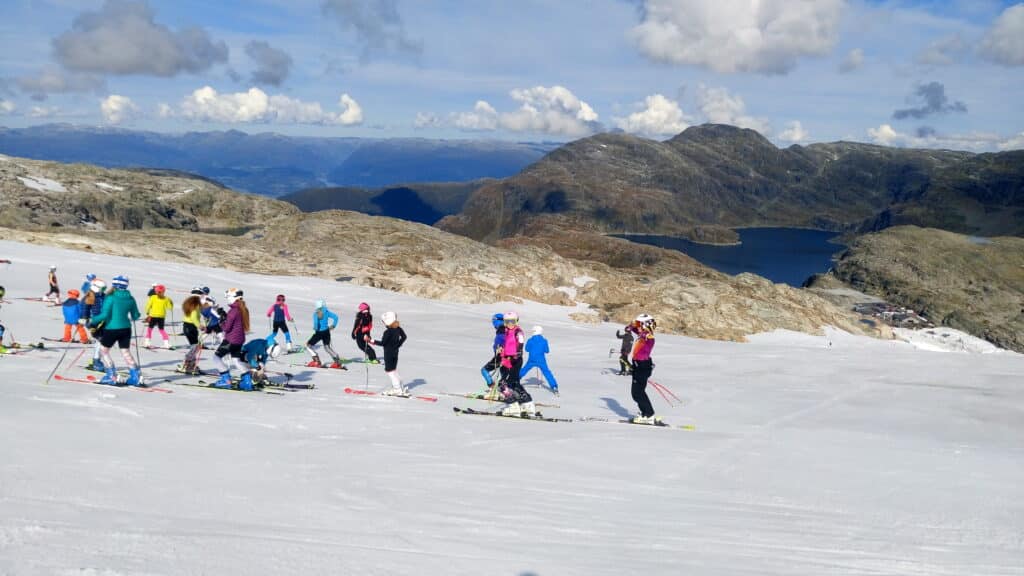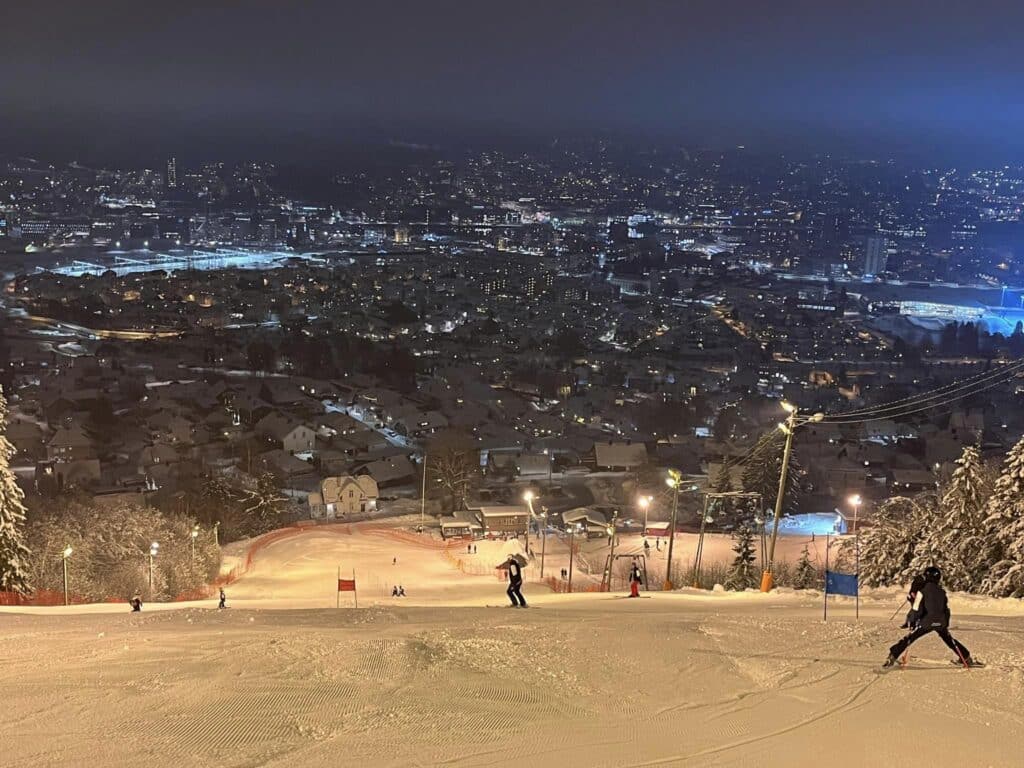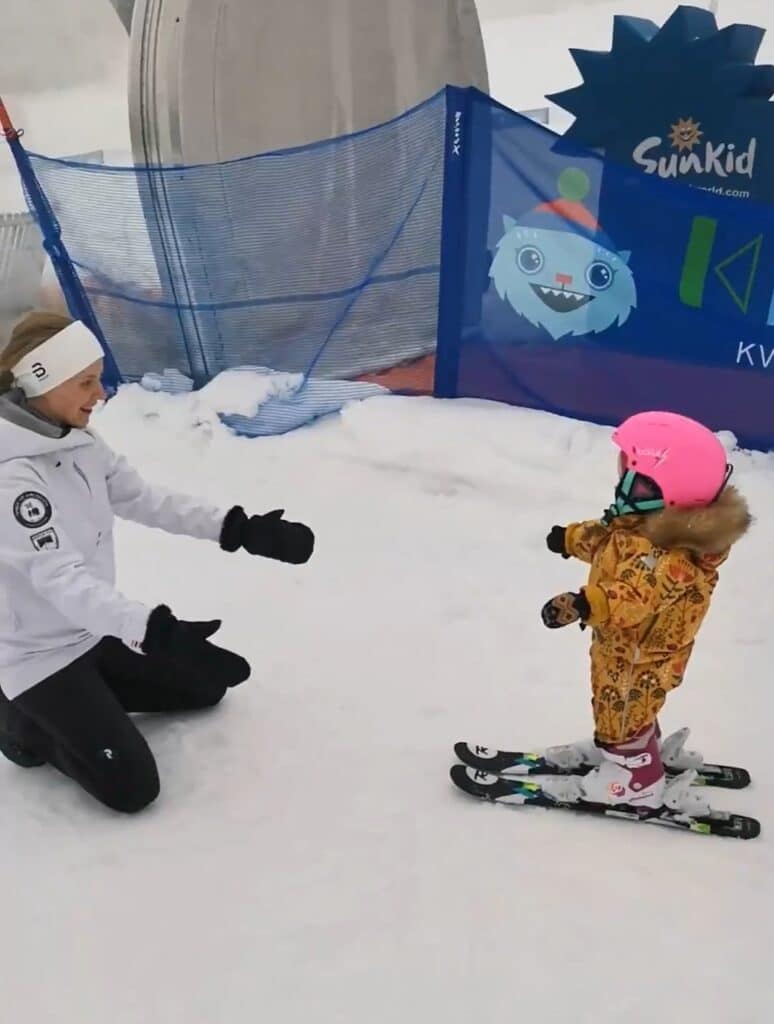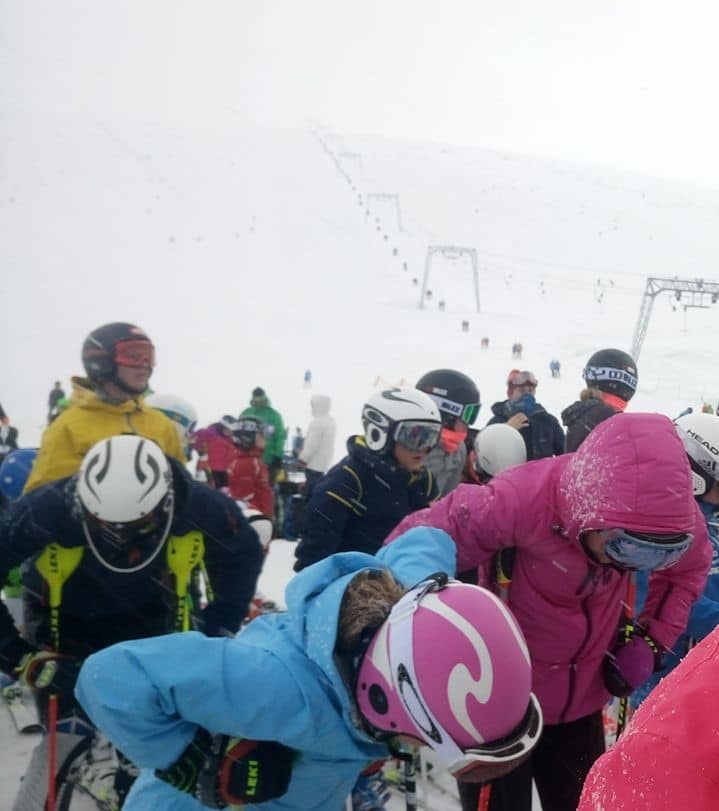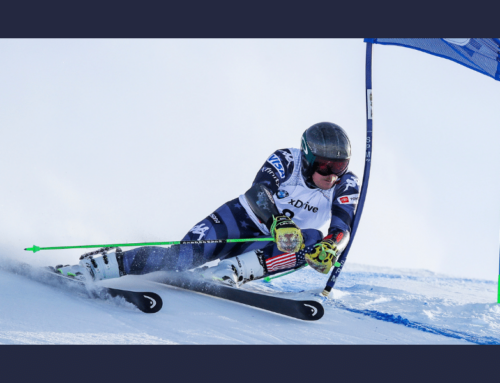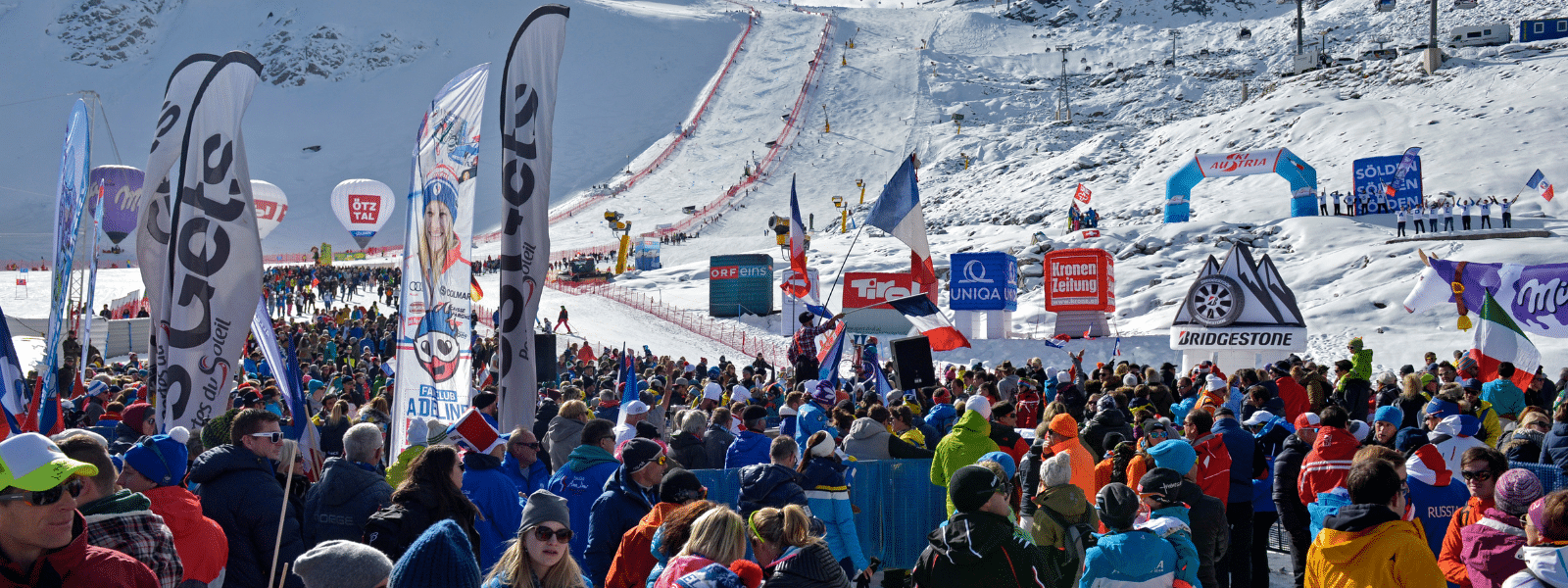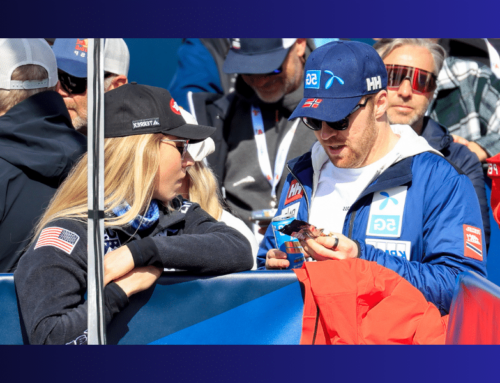The Norwegian Development System
Rising Ski Star recipient and World Cup slalom champion Lucas Braathen: GEPA Photos
With its 31-member national team, Norway has won two 2023 World Cup Globes and placed third in the Nations Cup. How does Norway create so many top racers? Ski Racing looks at parts of the Norwegian development system in a three-part series. In this first article Alpine Director for the Norwegian Alpine Team, Claus Ryste, shares his thoughts about the Norwegian model.
Part 1 – The Norwegian Development System
Part 2 – Possibly the World’s Best Ski Club
Part 3 – Norwegian Top Racers Share Ski Club Experiences
The development ladder
Claus Ryste has worked for the Norwegian Ski Federation (NSF) since 2010, where he is the alpine director for the Norwegian Alpine Team. Before that, Ryste coached and later managed the successful Norwegian ski club, Bærums Skiklub, from 1996-2010. During that time, he was also central in starting and managing Dønski Alpin, a ski academy owned by Bærums Skiklub (BSK) and based out of a public high school.
Ryste points out the strong sides of BSK when highlighting contributing factors for successful skier development:
- The type of atmosphere and enthusiasm BSK has created.
- A well-run, compact ski area for training.
- Good coaches.
- A system that offers opportunities to train and ski a lot.
Major building blocks in the Norwegian system are the ski club environments and the ski academies, which incorporate individual athletes and volunteer parents. The ski clubs usually offer training programs for age groups U8-U16, sometimes also for older ski racers. When skiers complete the U16 age group, they are old enough to enter ski academies (high school), according to the Norwegian school system. Ski academies are typically attended for three school years following U16.
“The Ski Federation’s national team is just the last part at the top of the ladder,” Ryste says. He explains that there is a more significant part of the ladder below than above the level at which the racers get in under the wings of the Norwegian Ski Federation, “though the absolute steepest part comes from top-60 in the world to top-1.”
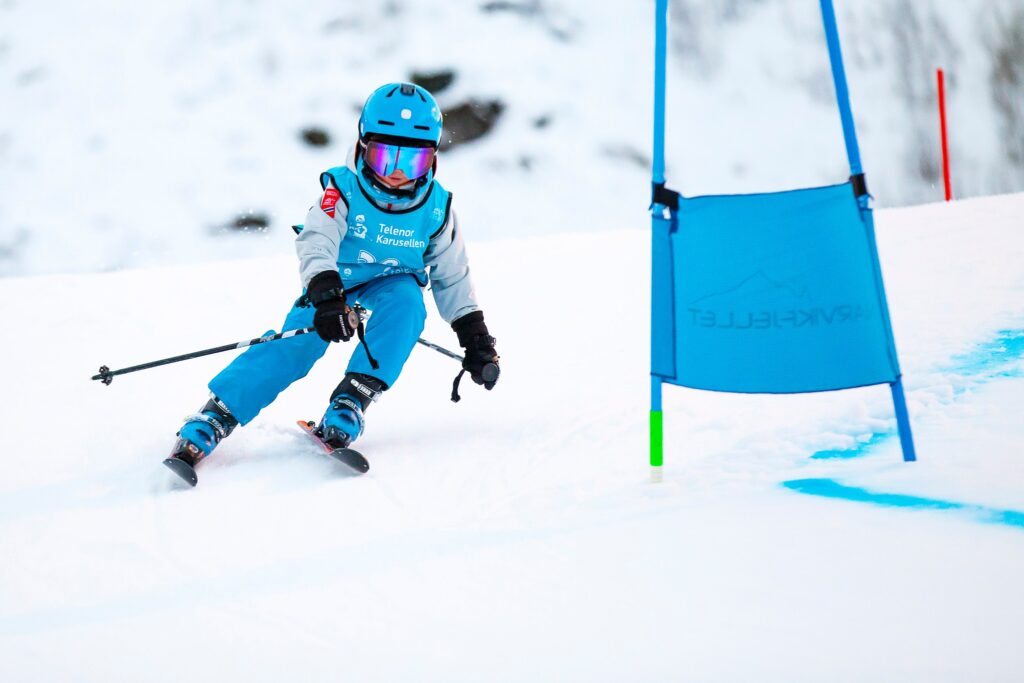
Not dictated from the top
Athlete development in Norway is not directed from above by the national ski federation or regional federations. Instead, the ski clubs and ski academies are free to plan and execute the training the way they see fit for their individual athletes at any given time. The system is primarily based on, and dependent on, the environment in the local ski clubs and ski academies. This closeness between skiers and coaches and the possibility for independent decision-making based on who is present in the training group at any given time are the main advantages of the Norwegian system, according to Ryste.
“We’ve owned that development base together over several generations,” Ryste says about the model with independent clubs, academies and the Norwegian Ski Federation. “And we’ve produced Furuseth, Finken, and, you know, we produce over time, and it is the ski club and ski academy environments and the whole skiing culture that does it,” Ryste says as he thinks back to the late 1980s and early 1990s when the Norwegian racers Ole Kristian Furuseth and Finn Christian “Finken” Jagge won major international victories. Their achievements and that era are viewed as the start of what some describe as the “Norwegian alpine skiing fairytale.”
The Norwegian men have delivered top results for the past few decades. At the 2023 FIS Alpine World Ski Championships, the Norwegian men won four medals and recorded 10 top-10 results, even with top racers being out for medical reasons. In addition, the Norwegian women and men won silver behind the USA in the team parallel event.
During the 2023 World Cup season, the Norwegian men earned 35 podium results, including 14 victories. Lucas Braathen won the World Cup slalom title with Henrik Kristoffersen in second. Aleksander Aamodt Kilde won the World Cup downhill title and placed second in the super-G cup. Kristoffersen placed second in the giant slalom cup. In the men’s overall World Cup, Kilde placed second and Kristoffersen third. In other words, there were one or two Norwegian men among the top-three in all discipline cups and the overall cup in 2023.
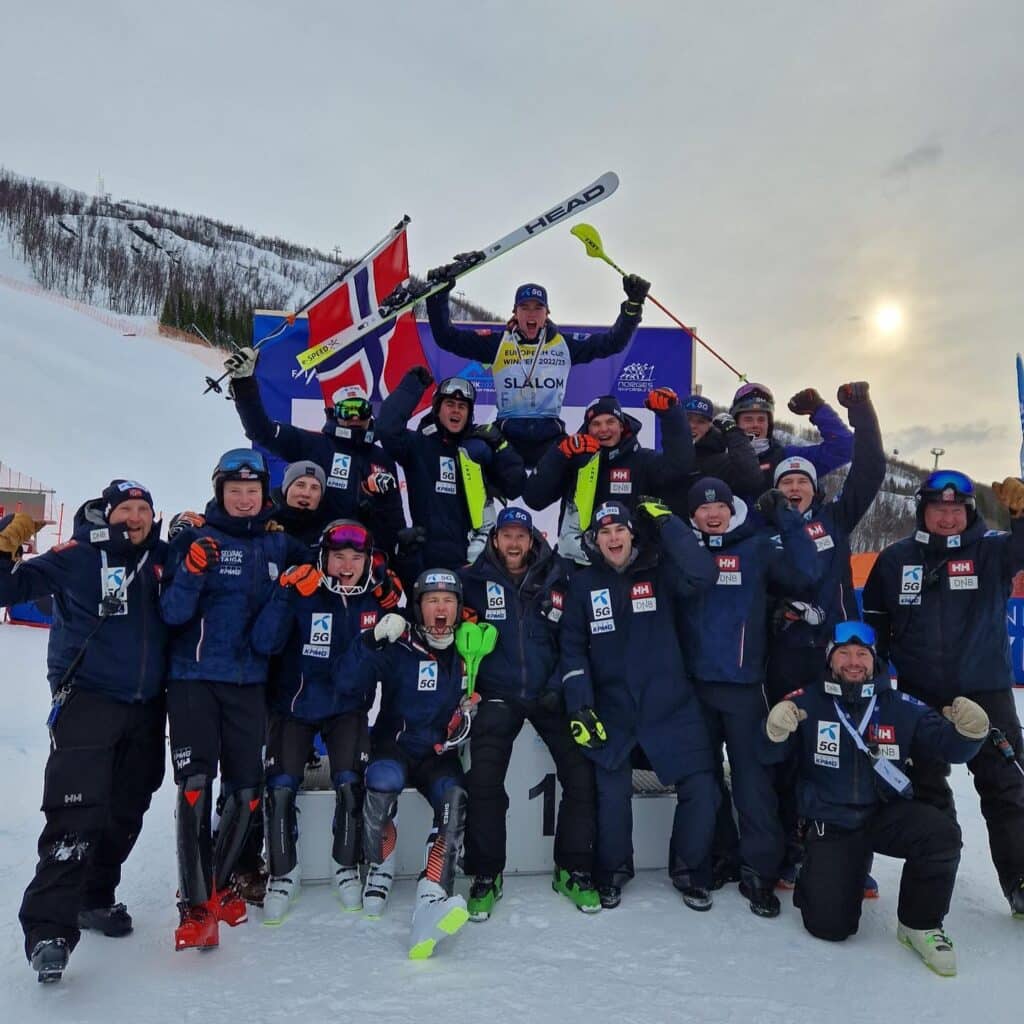
Women’s fairytale?
However, the “fairytale” for the Norwegian women didn’t coincide with the men’s. Through past decades, the development of female skiers in Norway has received less funding and little long-term attention compared to male skiers. Hence, the top results for Norwegian female racers were fewer and further apart, despite hard work amongst many young alpine girls and the people working alongside them.
In recent years, the Norwegian Ski Federation has given increased funds and attention to the long-term development of female alpine ski racers. The results are starting to add up:
At the 2023 FIS Alpine World Ski Championships, the compact Norwegian women’s championship team of six racers won four medals and recorded nine top-10 results. Maria Therese Tviberg won the parallel event and became the first Norwegian female Alpine World Ski Champion since 1958 (Inger Bjørnbakken, slalom World Champion in Bad Gastein, Austria). Kajsa Vickhoff Lie and Ragnhild Mowinckel won a WSC bronze medal each.
Also in 2023, Vickhoff Lie became the first-ever Norwegian woman to win a World Cup downhill competition. Mowinckel won one World Cup super-G and finished third in the 2023 World Cup super-G standings. The Norwegian women’s team recorded seven World Cup podiums and 34 top-10 results total this season.
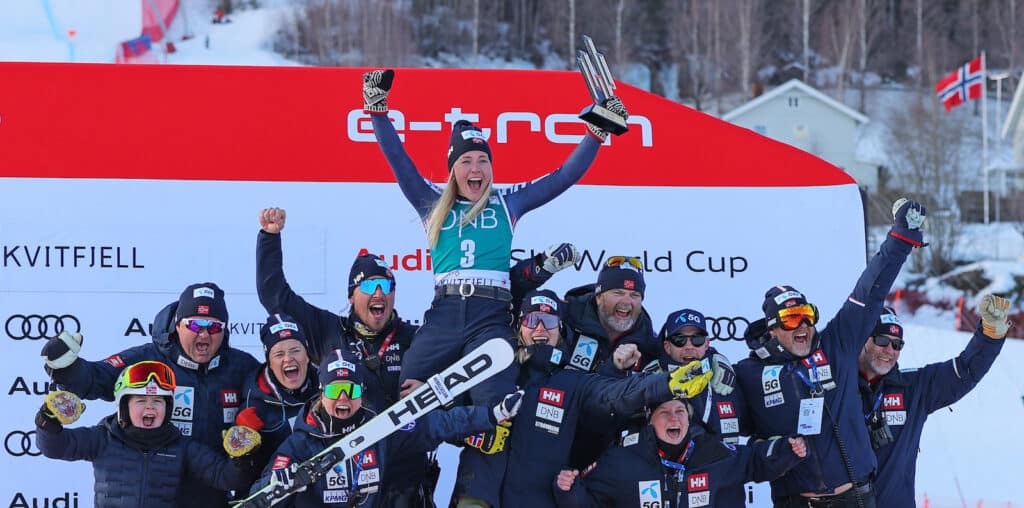
Previously, speed and giant slalom racer Mowinckel won two Olympic silver medals in 2018 and a 2019 World Championship bronze.
Finally, a forceful women’s national team has been built over time. With more female skiers able to work together and support each other, a strong and successful team culture similar to the men’s team culture can flourish. Plus, younger Norwegian female racers are knocking on the door.
Let’s look at some of the elements in the Norwegian development ladder which lead to the success of these compact national teams.
Born with skis
Norwegians like to say they are born with skis on their feet. It isn’t far from the truth. Skiing is ingrained in the national culture. For most children, skiing is part of playing with friends and spending time with family.
When children are old enough to walk, many get their first pair of skis, either cross-country skis paired with comfortable children’s cross-country boots or toddler skis with bindings strapped right onto their regular insulated winter boots. Kids often play in the snow, so adding skis just seems natural.
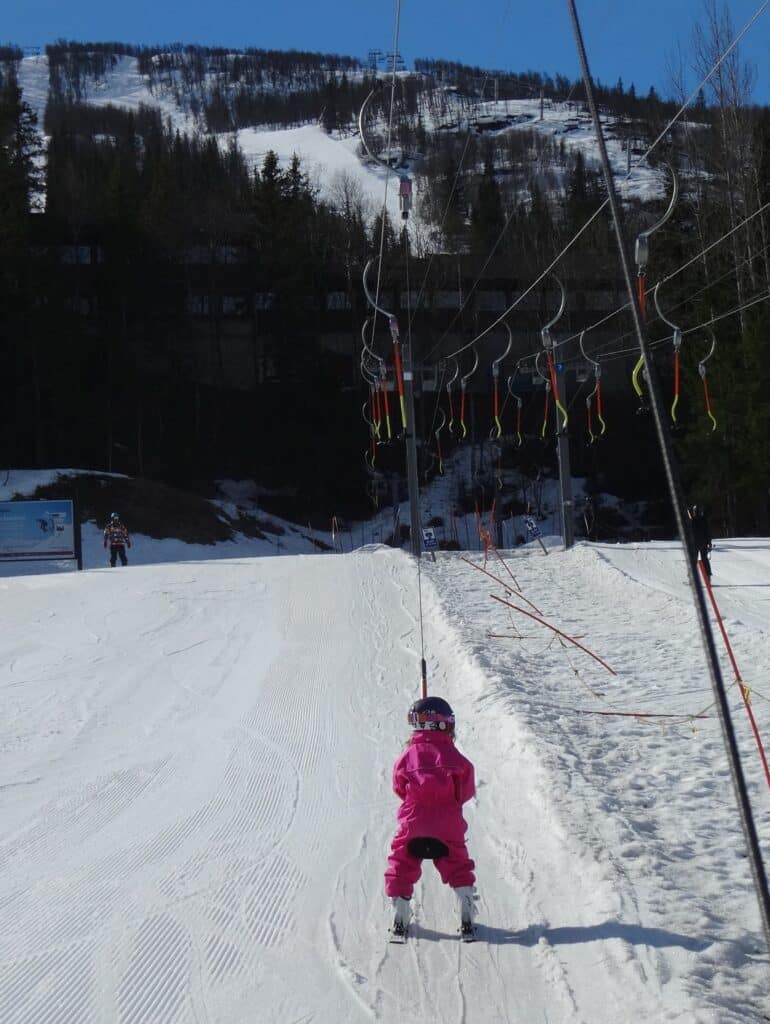
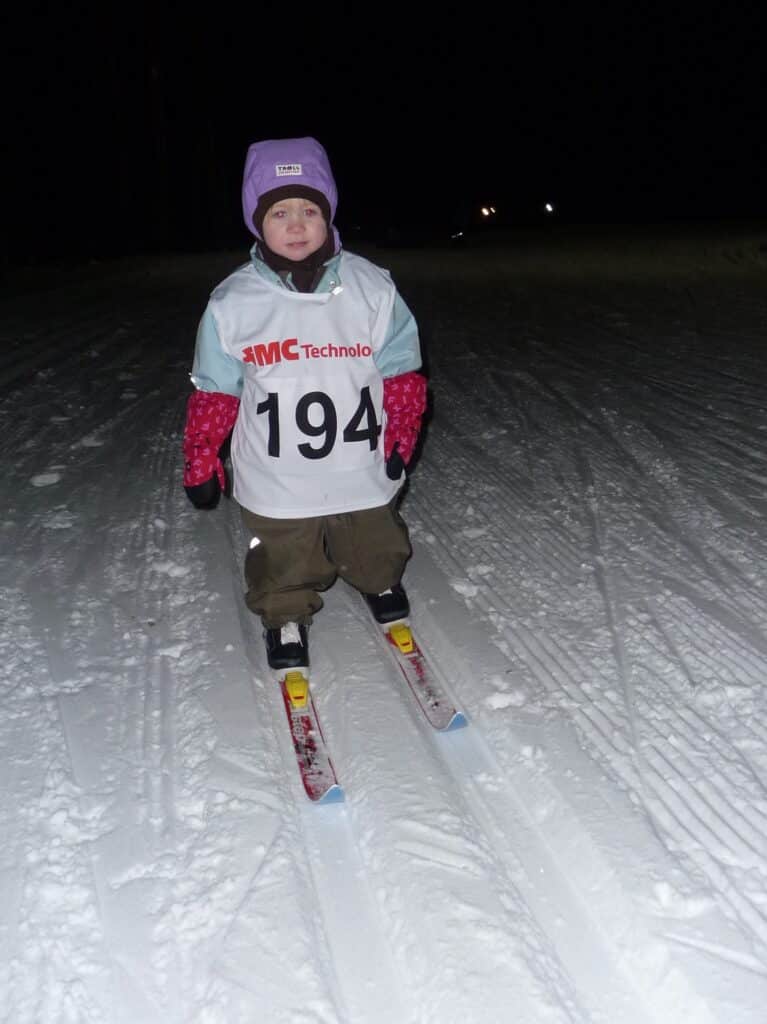
Kids climb up small hills, ski back down and build little jumps. They play on skis in their gardens or surrounding areas, on snow-covered soccer fields, in parks, or on groomed cross-country ski trails. They make faceplants, laugh or cry, get back up and try again. That childhood experience is the foundation of Norwegian skier development.
Kjetil Jansrud is an example of a ski racer who played on skis in his garden. From there, through dedicated training, he became an alpine skiing legend with five Olympic medals, three World Championship medals and 23 World Cup victories. You can read about his entire journey, get ski racing insight and see unique photos in this article: Thank you, Kjetil Jansrud.
The neighborhood hill
After first playing and skiing with friends and family, many young skiers then go on to ski school and ski training with the local ski club. Local ski areas with one or a few smaller hills and just a T-bar or other short lifts are common in Norway.
Ryste points out how a significant share of world-class ski racers come from a small hill with a T-bar. He says the more compact training arenas create a significant advantage: “Many runs, close contact with the coaches, quick feedback, and togetherness instead of sitting on a chairlift forever and getting cold.”
Some of the current Norwegian World Cup racers who grew up training on smaller hills are Aleksander Aamodt Kilde, Henrik Kristoffersen, Lucas Braathen, Atle Lie McGrath, Alexander Steen Olsen, Kajsa Vickhoff Lie, Mina Fürst Holtmann and Kristin Lysdahl.
These smaller ski areas typically have floodlights and are close to where the young skiers live, so they can go to practice or ski for fun with friends after school and during the evenings.
Children’s rights in sports
Norwegian children are encouraged to stay active in various sports, at least into their early teens. Being versatile helps develop a broad athletic base and decreases the risk of injuries due to early specialization. In addition, when trying out several sports, children have a greater chance of finding an athletic activity they enjoy and will continue participating in for longer.
In 1987, The Norwegian Olympic and Paralympic Committee and Confederation of Sports (NIF) General Assembly adopted “The Children’s Rights in Sports” and “Provisions on Children’s Sports,” which regulate sports for children up to age 12. The goal is to develop positive sports activities for every child as an individual. “This is done by facilitating a natural progression in how far children should travel, what competitions children are permitted to participate in, and how awards, ranking and results lists should be used,” according to a NIF pamphlet.
The Children’s Rights in Sports “express the values that should form the basis for children’s sports in Norway,” according to NIF. They describe “factors that are important for the children to feel safe, to experience mastery and to influence their own activity. In short, these rights are focused on promoting and safeguarding children’s best interests,” according to NIF.
Unique in global context
“These rights and provisions are unique in a global context and are designed to help children have a positive experience every time they participate in training, competition or other activities. When participating in sports, children should experience a friendly environment, feel safe, want to try new things and not be afraid to make mistakes.
“Children are children and not small adults. All sporting activities and competitions should therefore be open to any child wishing to participate. Furthermore, such activities should be developed and adapted for children so that they are encouraged to learn new things and are motivated to continue playing sports for as long as possible,” NIF writes.
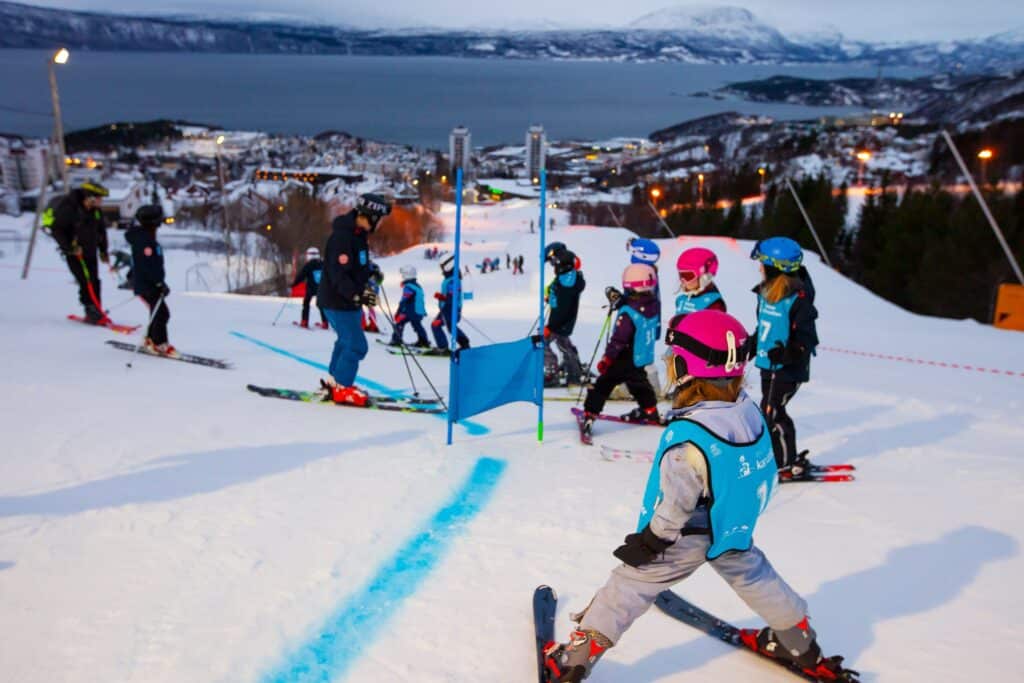
Not everyone involved in alpine ski racing in Norway believes the NIF provisions are a good idea and instead think children should be allowed to be ranked officially in competitions at a younger age. Others use the current system to turn the training focus towards the development of basic skills, solid ski technique and long-term development rather than towards race results and traveling to competitions far away during the younger years.
The environment in each ski club and who oversees organizing a ski club program during a season dictates how well each alpine club program includes the NIF recommendations into their ski club and training group values. Hence, the build-up of each club, the club’s culture and values can vary to a great degree. This, in turn, will directly affect the actual training sessions and the children involved. There are variations in how each club runs its alpine program, including whether they include all skiers on an equal basis or focus primarily on a selected few, and whether they choose to work long-term or focus more on each season’s race results. Location, member mass and economy also lead to variations. Still, the NIF guidelines always regulate race organization and distances traveled to competitions until age 12.
Ski club environment
The ingredient highlighted as the most critical factor by everyone interviewed for this series about Norwegian alpine ski racers’ success is the environment in their ski club. Young skiers should have fun and make friends, so ski practice becomes an excellent place to spend time. To achieve this, the training and the structure must be set up with the children’s needs in mind. If your program doesn’t create a setting where the young skiers want to come and practice with enthusiasm over and over again, you won’t end up with solid, fast ski racers – or other content skiers, for that matter.
Successful speed discipline racer Vickhoff Lie is highly passionate about keeping young skiers, particularly girls, in the sport for a long time. In a recent talk with Ski Racing, Vickhoff Lie pointed out how the large group of girls her age in her ski club BSK, as well as the excellent environment in the whole training group with girls and boys together at the club and ski academy levels, were significant factors that kept her in the sport at the start and through the years.
When asked what ski clubs should do to create a good ski program, Vickhoff Lie is clear: “Number one, get as many as possible to continue ski racing as long as possible by having a good time skiing.”
Vickhoff Lie wishes to encourage and enable girls to stay in skiing longer. She has a particular focus on speed events. “I have an idea and I have dream to organize a speed camp for girls, and I am moving closer to achieving this,” Vickhoff Lie tells Ski Racing with excitement and determination.
Ryste also believes keeping as many skiers as possible in ski clubs is extremely important. He says: “We are lucky enough to be active in a sport where there is no contradiction between the best and the worst (participant). There can be a difference in courses, surfaces and similar things when they grow older. However, I believe it’s essential to focus on the environment (in the club).”
The Norwegian alpine director says there is no reason to pick out only the best skiers to participate in the club program in alpine skiing.
Ryste pinpoints the great value of the friendships created during the ski club years: “Whether it is Henrik (Kristoffersen) or Lucas (Braathen) or Aleksander (Aamodt Kilde), the friends they made in their ski club training groups are their closest friends still today. The others didn’t become the best in the world, but you should not underestimate the value of (these friendships),” Ryste points out.
How to keep athletes involved
The value of ski club friends also became apparent when I (the author) concluded ski coaching education through the Norwegian Ski Federation in 2000 with a research paper. Through in-depth interviews with teenage ski-racing girls from two Norwegian ski clubs (BSK and Geilo IL) who either still practiced and raced or had stopped ski racing, it became clear that two aspects were imperative to whether the girls stuck with ski racing or stopped during their early teenage years (before ski academy age): Whether they had good friends in practice and whether their family stayed closely involved in their sport and their ski club program. An increasing amount of schoolwork was also mentioned by some. Ski racing results did not significantly influence their decision to quit or continue ski training and racing at that age.
In 2011, former U.S. Ski Team racer and experienced coach Felix McGrath became the managing director for the BSK alpine group. He and his coaching colleagues developed a sports plan still in use in BSK today. McGrath points out a significant question they focused on when creating the strategy for skiers U8-U16: “How do you keep them engaged and eager to ski every day they go to the ski hill? It’s about finding the proper balance to avoid burnout by age 15, while still pushing learning the proper ski skills, which takes time on snow. Our plan was to create an environment that motivated skiers while keeping the focus on being good skiers.”
Ryste says keeping a certain mass is vital for the ski clubs and the skiers. Clubs with larger groups will attract more skiers, and the positive trend with large, stable ski club environments will continue, according to Ryste.
For decades, BSK has had a clear policy of including as many skiers as possible and making them feel a part of a greater team. Back in the days with Ryste at the helm of BSK alpine skiing, everyone traveled to some of the ski club training camps as one group. At some BSK ski camps, as many as 100 young alpine skiers lodged together and practiced at the same ski area. It involved many logistics but gave long-term results, according to Ryste.
Alternative paths
Granted, children from many countries are introduced to skiing at an early age. However, the systemic development path from young skier to World Cup status varies among the more dominant ski nations.
In some countries, the national ski federation plays a significant role in skiers’ development from a relatively young age. Examples are Austria and Switzerland, where regional ski federation teams select and pick up younger skiers.
In other countries, the national ski federation takes an active role in organizing young skiers’ training at a much later point. This is the case in Norway, where ski clubs and ski academies create the main structure for skier development until the racers are well on their way into European Cup or even World Cup racing. That is when the Norwegian Ski Federation takes over the primary responsibility for athlete development.
Also noteworthy: The number of athletes on the Norwegian National Alpine Ski Team is smaller than in many other countries. There are 31 racers on the Norwegian Alpine Team this season: 19 men and 12 women holding A-, B- or C-status, plus four men on the Para-alpine Elite Team.
In comparison, before the 2022-23 season, the U.S. Ski Team named 43 athletes to the alpine squads. According to announcements last spring, Switzerland named 99 skiers to their teams, and Austria named 50 skiers to their national and A-teams (in addition to other Austrian team categories).
Ski academies
After developing as skiers through their ski clubs, most young racers in Norway that wish to aim towards the national team attend a ski academy. Because of the Norwegian school system, skiers do not enter ski academies until the first year after U16.
There are eight ski academies in Norway based on various systems. Some operate in connection with public high schools. Others are part of a non-profit sports academy with multiple locations in Norway, including three that offer an alpine skiing program.
The ski academies cooperate on how and when to organize their on-snow tryouts and skier/student selection process. In addition, the ski academies follow the standard national procedures for the academic part of the applications.
Ryste says the autonomy of the ski academies, meaning they are not directly directed from above by the ski federation, and the closeness between coaches and skiers are valuable factors. Coaches can adapt plans and training to the group of racers that are there at any given time, “contrary to this needing to be controlled remotely because there is a ski federation logo involved in a junior program or similar types of programs,” he says and continues: “As if I am supposed to follow everything from the guy who will win World Cup to the one that might win World Cup in seven years. Then I am not sure if the quality will be good enough. So, I believe the closeness to the individual is important, and this is the advantage of our system,” Ryste points out regarding the ski academy coaches being entirely in charge of their training groups.
At the same time, the ski academies work in close cooperation with the Norwegian Ski Federation through monthly meetings. Here, all parties contribute ideas on how to improve this cooperation.
The team jacket
The system in Norway cannot be compared to the largest nations within alpine skiing, such as Switzerland and Austria, Ryste says. “The conditions are very different. They do not have as many hills with floodlights as we do, so they practice during school hours. They have sizeable regional ski federations underneath the national federation. It’s a lot of staff and a whole industry. It’s not comparable.
“My impression is that it can become too structured,” Ryste says about the systems in Switzerland and Austria. He gives an example: “When you are 15, you are given a regional team jacket in Austria, which defines you as one of the best, while the neighbor girl might not get a jacket,” he continues, implying how the definition of good and average skiers is made at an earlier age. This might affect the attitude towards training, ski racing and the future trajectory for both the young teens that are elected for a team at an early age and for the ones that are not.
“What’s so unique about us is that people come in (to the national team) when they’re 18-19-20 years of age and race top World Cup. We have a principle that if you are good enough in Norway, age does not matter, while in our competitors’ larger teams, there are often so many others in front of you,” Ryste says, pointing to everyone selected onto the larger Central European national teams.
There are also societal aspects that are different between Norway and Austria, according to the alpine director for the Austrian Ski Federation, Herbert Mandl. Mandl talked with Ski Racing about the status and ways to improve Austrian results earlier this season: Austria Hungry for More, but Star Coach Quits
The cost
The downside of the Norwegian system is that the racers do not receive more ski federation support earlier on in the developmental process. Hence, the Norwegian ski families are responsible for the expenses for athlete development for a few years longer than in some other countries.
Ski Racing asked Lucas Braathen and Atle Lie McGrath about when they became parts of the Norwegian national team:
“I think it was when I debuted in the World Cup. That was the first time I received support. That was the first time I scored points for our team, and then I was allowed to continue with the team. It was in Val d’Isère (Dec. 8, 2018). There was no support before that,” Braathen explains to Ski Racing.
How about McGrath? “The same year as Lucas. Lucas and I skied with our ski academies the last school year and had a mix of a ski academy and European Cup season. Days after Lucas scored his first World Cup points, I made my first European Cup podium and Lucas won. So, we finished one and two in the European Cup (Dec. 18, 2018). That’s when I was included. But it was the same way (as Lucas); there was zero support until then. It was ski academy and club until that point,” McGrath says.

Ryste acknowledges that the high cost is a challenge. He says there are some minor local and regional economic support opportunities through ski clubs and regional ski organizations, though with regional variations. The ski academy years are particularly tough economically when families pay for a 100% professional program, including travel, equipment, coaches, etc. There is some governmental support towards the school expenses, but the cost is still very high, according to Ryste.
“The Norwegian Alpine Team has grown in numbers of staff, athletes, income and results over the past ten years, but getting better with more athletes onboard also results in higher costs. So, for the period until the next Olympics, we focus on ensuring we have a competitive World Cup training program and a European Cup training program. The European Cup program was cut during the Corona period, and we are now in the process of rebuilding this offer for young Norwegian athletes,” the Norwegian alpine director says.
The void
In addition to the economy, there is also another aspect regarding the Norwegian Ski Federation not picking up racers until a later point:
“Let’s say you haven’t reached your goals during your ski academy years; then you end up in a vacuum. The regional ski organizations have challenged us to contribute more there,” Ryste says about what may be a weaker link in the Norwegian developmental system.
Currently, there are some post-ski academy teams in Norway where participating racers must pay some of their costs. These programs aim to offer high-quality training and race support for FIS and EC level athletes seeking to qualify for the Norwegian Alpine Team. The programs are individually run and not part of the Norwegian Ski Federation, though there is close communication between the teams and the ski federation.
An ode to the parents
Parents’ positive and active involvement in alpine skiing is significant and an essential part of the ski racing success Norway is experiencing. The Norwegian success wouldn’t have been possible without all the volunteer help in the ski clubs, at ski races, the hours spent facilitating training and racing every year, and all the hours spent in the car driving to camps and races (note: often quality time with your child!), and the families’ willingness to support the young skiers financially.
The growing cost of alpine skiing and racing is becoming an increasing challenge for the sport itself in most countries. The economic aspect often requires tough prioritizing for many skiing families. However, what your child learns and what you get out of it, in the end, might still be worth it – in many ways, not just (possibly) good race results.
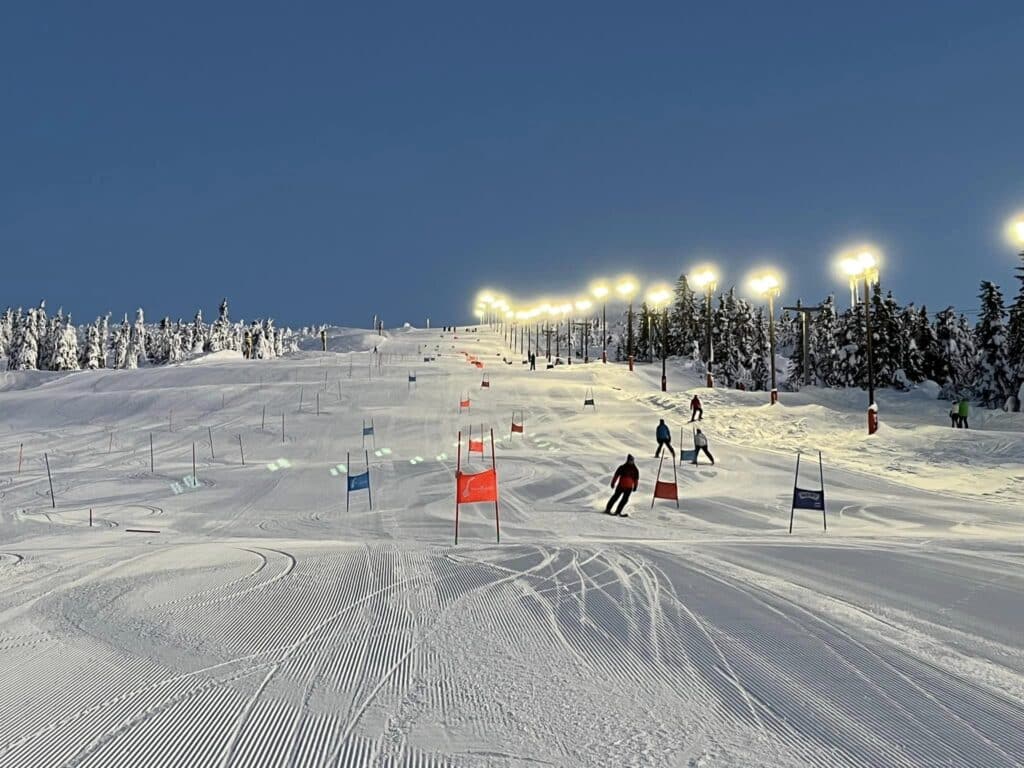
Trust the process
As pointed out by several people behind Norwegian alpine skiing success stories, the first step is for ski clubs, coaches, parents, and skiers to work together to create a positive, inclusive, enthusiastic environment in the local ski club, with the objective of keeping most of the children excited about skiing and training for as long as possible.
Make a good plan. Make sure the club programs allow for happy children and skier development while focusing on learning good and solid skiing techniques, being versatile and working for the long term.
Like successful Bærums Skiklub (BSK) and coach Felix McGrath put it: Trust the process. Read more about the BSK environment and sports plan in the following article in this series.
Norwegian skier development – the whole series:
Part 1 – The Norwegian Development System: The Alpine Director for the Norwegian Alpine Team, Claus Ryste, discusses the Norwegian model, where ski clubs and ski academies play the lead roles on the path to the national team.
Part 2 – Possibly the World’s Best Ski Club: A view into a successful Norwegian ski club, its sports plan and thoughts from the plan’s creator, ex-U.S. Ski Team racer and coach Felix McGrath. – To be published.
Part 3 – Norwegian Top Racers Share Ski Club Experiences: Norwegian World Cup racers Lucas Braathen, Atle Lie McGrath, Mina Fürst Holtmann and Kajsa Vickhoff Lie share views on what worked well during their young ski club years.
